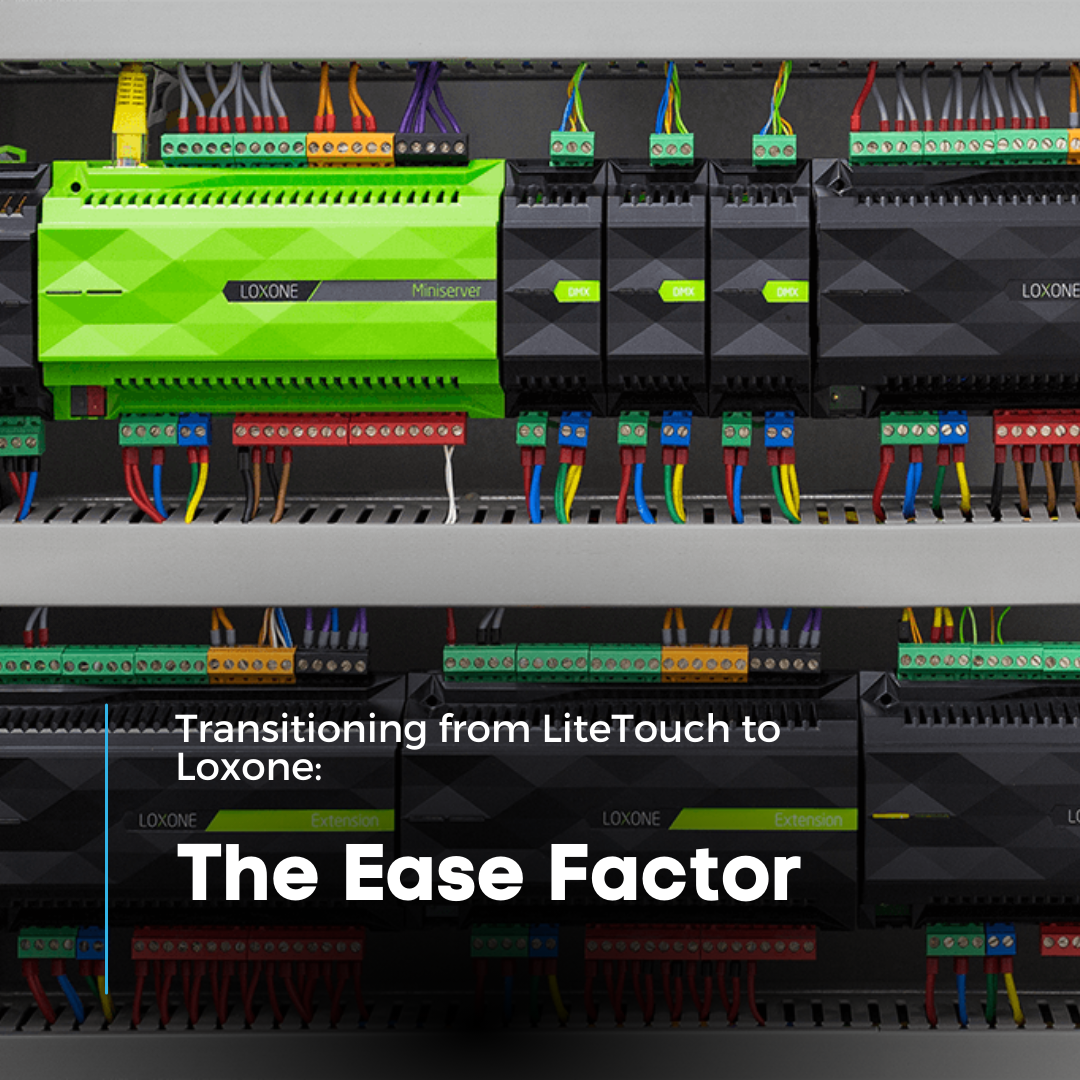
LiteTouch Structure
- Similar Infrastructure: Both Loxone and LiteTouch are wired systems, which means that a large part of the existing LiteTouch infrastructure can be used when switching to Loxone. This reduces the amount of rewiring required and can help make the transition smoother.
- Upgrade Flexibility: Loxone offers flexibility in upgrades. You can replace an entire LiteTouch system at once or gradually transition room by room, depending on your budget and needs.
- Professional Support: With the support of a professional like Grizzly Tec, who has experience in both LiteTouch and Loxone systems, the transition can be fairly straightforward. The process involves removing LiteTouch modules and replacing them with Loxone equivalents, configuring the Loxone miniserver to control the new modules, and setting up new touch panels or keypads.
- Customization: Unlike the static scenes setup in LiteTouch, Loxone allows dynamic and easily customizable scenes that adapt to your lifestyle changes over time. You can create and modify these scenes yourself via the user-friendly Loxone App.
- Training and Support: Once the Loxone system is installed, the professional installer will train you on how to use the system and make changes to it. Moreover, Loxone has active support and continuous software updates, which makes it a reliable choice for the long term.
Remember, every home and LiteTouch installation is unique, so the complexity of the transition can vary. But with professional guidance and support, replacing LiteTouch with Loxone can be a smooth and manageable process.

Loxone Infrastructure. (Loxone also has a wireless solution, combined with the hardwired and tree makes Loxone great future proof solution)
The Step-by-Step Replacement Process: Modules, Brains, and Keypads
- Replacing Modules: The first step in transitioning from LiteTouch to Loxone is to replace the LiteTouch modules. These include dimming, relay, and motor modules which control your home’s lighting, outlets, and motorized devices respectively. Loxone offers an extensive range of similar modules that can seamlessly take the place of LiteTouch’s modules. This is a critical step because it’s these modules that actually control your home’s various electrical systems.

- Replacing the Brain: The brain or the central processing unit of the LiteTouch system needs to be replaced with a Loxone Miniserver, which acts as the central control for the Loxone smart home system. The Miniserver connects to all of the replaced modules and is responsible for orchestrating the various systems of your home. It allows for easy programming and automation, with an intuitive interface that makes customization simple and user-friendly.

- Replacing Keypads: Lastly, the LiteTouch keypads need to be replaced with Loxone’s Touch switches or Touch Pure switches. These new keypads not only control lighting but also integrate intercom, multimedia, security, shading, and heating control. A single Loxone Touch switch can replace multiple LiteTouch keypads, simplifying your wall control points.

Remember, each of these steps should be carried out by a Loxone Partner for the smoothest transition. Professional installation ensures all systems are integrated correctly and function as intended. With proper execution, replacing LiteTouch with Loxone is a straightforward process that leads to a more capable and customizable smart home experience



